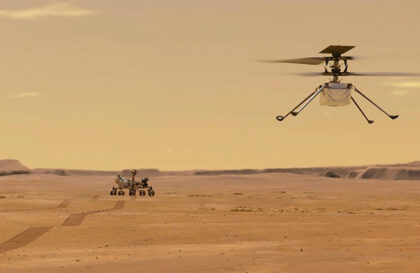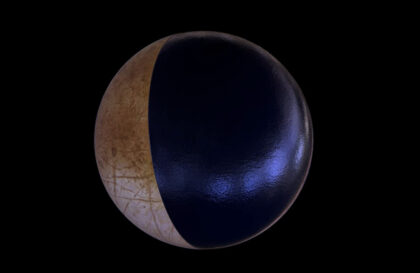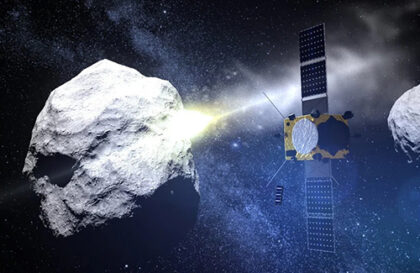The pyramid-shaped Pathfinder lander, about a meter tall with petal-shaped solar panels, and the six-wheeled Sojourner rover, the size of a van, explored Mars for nearly three months.
Arrival on Mars
Launched shortly after Mars Global Surveyor, Pathfinder traveled to Mars on a seven-month route that was slightly shorter and allowed for an earlier arrival. A vital mission element was a six-wheeled, 23-pound rover called Sojourner. This rover could travel up to 545 yards (about 500 meters) from the mother spacecraft, reaching a maximum speed of almost half an inch per second (about 1 cm/sec).
The mission’s main goal was to demonstrate innovative and low-cost technologies and obtain geological, soil, magnetic, and atmospheric data.
After a seven-month journey and four trajectory adjustments, Pathfinder arrived on Mars. On July 4, 1997, NASA landed the Pathfinder spacecraft on Mars for the first time in two decades, following the successful Viking 1 and 2 missions.
While descending through the atmosphere, the spacecraft used an aerodynamic shell with a heat shield to decelerate enough to deploy a supersonic parachute. After deployment, the parachute further reduced the vehicle’s speed to 223 feet per second (68 m/s).
When the heat shield separated from the aeroshell, the lander was detached. At approximately 1,165 feet (355 meters) from the surface, the airbags inflated in less than a second, preparing the craft for landing.
The giant airbag system softens the impact. Credit: NASA
Three solid rockets further reduced the spacecraft’s speed by activating approximately 330 feet (100 meters) above the Martian surface. However, they were detached at about 71 feet (21.5 meters) and flew away with the parachute.
The lander, inside the airbags, touched down on the surface at a speed of approximately 46 feet per second (14 m/s), experiencing an acceleration of about 18 g. He took at least 15 bounces before stopping completely. The airbags then deflated, exposing the lander.
Using images and data from the Viking Orbiter, scientists chose the Ares Valley plains on Mars for the Pathfinder landing because of their access to traces of ancient watery Mars. With improved landing techniques compared to the Viking mission, Pathfinder landed just 19 km (about 12 miles) from its chosen target in Ares Valley, at the mouth of an ancient water channel rich in distinctive rocks to study.
The day after landing, Pathfinder launched the Sojourner rover onto the surface of Mars. The rover, the first wheeled vehicle on another planet, surveyed numerous sites, transmitted 550 photographs, and conducted chemical analyses at 16 locations near its landing site during its 83-day mission.
Sojourner. Credit: NASA/Planetary Science
Significant scientific discoveries of Mars Pathfinder
Pathfinder transmitted more than 16,500 images and 8.5 million measurements of air pressure, temperature, and wind speed.
The rover’s data showed that the rocks at the landing site resembled Earth’s volcanic rocks with high silicon content, specifically a rock known as andesite.
NASA’s Mars Pathfinder Lander and the Sojourner Rover on Mars. Credit: NASA
Round rocks at the Pathfinder landing site and other observations indicate that the conglomerates may have formed in water currents in Mars’ warmer past.
Radio tracking helped pinpoint the craft’s location and Mars’ rotation pole, revealing the radius of its metallic core to be more than 800 miles (1,300 km) but less than 1,250 miles (2,000 km).
Magnetic dust in the air may contain maghemite, indicating water cycling and iron leaching in the past. Dust devils, often seen and measured, dust devils could help mix dust with the atmosphere. Morning clouds of water ice and sharp temperature fluctuations were also recorded, indicating heating of the atmosphere by the surface of Mars with subsequent heat transfer upward.
Significant engineering achievements of the Pathfinder mission included a new method of delivering a spacecraft to Mars through direct entry into the planet’s atmosphere and, for the first time, delivering a semi-autonomous rover capable of conducting science experiments on another planet.
Two-way communication delays between Earth and Mars of up to 42 minutes required the Sojourner rover to be able to safely make autonomous decisions, which is now a standard feature on all Mars rovers.
A lesser-known result of the Pathfinder mission was NASA’s shift to using the Internet to interact with the public. Instead of the traditional distribution of photographs through press conferences and the media, NASA published fresh images from Pathfinder on the then-fledgling Internet. This resulted in record web traffic with over 200 million views from July 4 to July 8, 1997.
Pathfinder and Sojourner exceeded their planned service lives by 3 and 12 times, respectively. The last contact with Pathfinder was made on September 27, 1997, and despite attempts to re-establish communications over the next five months, the mission was officially ended on March 10, 1998.
Banner image: An artist’s rendering of Mars Pathfinder consisted of a lander and the first-ever robotic rover on the surface of the Red Planet. Credit: NASA/JPL-Caltech
Image credit:
https://www.nasa.gov
https://mars.nasa.gov
https://planetary-science.org
https://science.nasa.gov



